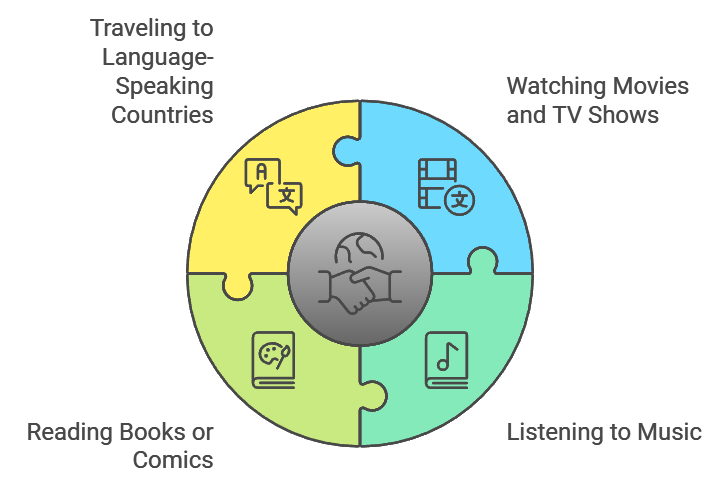Which is Easier to Learn: French or Spanish?
The answer to whether French or Spanish is easier to learn isn’t straightforward. It depends on various factors, including your native language, learning style, and personal interests. However, for most English speakers, Spanish is generally considered slightly easier to learn than French. But don’t let that discourage you from learning French if that’s your passion!
Key Takeaways
- Spanish is often easier for English speakers due to simpler pronunciation and spelling
- French has more irregular verbs and silent letters, making it a bit trickier
- Both languages share many words with English, which helps in learning
- Your personal interests and goals play a big role in which language feels easier
- Learning resources and opportunities are plentiful for both languages
- Career prospects are excellent for both French and Spanish speakers
- Individual factors like age and learning style can affect which language is easier for you
Linguistic Comparison of French and Spanish
Let’s break down the main differences between French and Spanish to see why one might be easier than the other.
Pronunciation and Phonetics
Spanish is often considered easier to pronounce for English speakers. Why? It has a more consistent sound-to-spelling relationship. Most letters in Spanish are pronounced the same way every time.
French, on the other hand, has some tricky sounds that don’t exist in English, like nasal vowels. It also has many silent letters, which can be confusing at first.
Grammar Structures

Both languages have similar grammar structures, as they’re both Romance languages. But there are some key differences:
- Spanish has two forms of “to be” (ser and estar), which can be tricky for learners
- French has more irregular verbs than Spanish
- Spanish verb conjugations are generally more regular than French ones
Vocabulary and Cognates
Here’s some good news! Both French and Spanish share many words with English. These similar words are called cognates. For example:
| English | French | Spanish |
|---|---|---|
| Family | Famille | Familia |
| Important | Important | Importante |
| Animal | Animal | Animal |
This shared vocabulary can give you a head start in both languages. 😊
Writing Systems and Orthography
Spanish has a nearly phonetic writing system, meaning words are usually spelled as they sound. This makes reading and writing in Spanish relatively straightforward.
French spelling can be more challenging due to silent letters and multiple ways to spell the same sound. However, French spelling rules are quite consistent once you learn them.
Factors Influencing Language Learning Difficulty
Remember, the “easier” language often depends on you! Here are some factors that can affect how easy you find a language:
- Your native language
- Your learning style (visual, auditory, kinesthetic)
- Your age (younger learners often pick up pronunciation more easily)
- Your motivation and interest in the culture
- The time you can dedicate to learning
French vs. Spanish: A Detailed Comparison
Let’s look at some specific areas where French and Spanish differ:
Verb Conjugations and Tenses
Spanish typically has more regular verb conjugations, which can make it easier to learn. French has more irregular verbs, which means more memorization.
Gender and Agreement Rules
Both languages use grammatical gender (masculine and feminine). In Spanish, it’s often easier to guess a word’s gender based on its ending. French gender can be less predictable.
Idiomatic Expressions
Both languages have their fair share of idioms. These can be fun to learn and offer insights into the culture. For example:
- Spanish: “Estar como pez en el agua” (To be like a fish in water – to be in one’s element)
- French: “Avoir le cafard” (To have the cockroach – to feel down)
Learning Resources and Technologies
Good news! There are tons of great resources for learning both French and Spanish. Some popular options include:
- Language learning apps like Duolingo, Babbel, and Rosetta Stone
- Online courses on platforms like Coursera or edX
- YouTube channels dedicated to language learning
- Podcasts for on-the-go learning
Cultural Immersion and Practice Opportunities

Both French and Spanish offer rich cultural experiences. You can:
- Watch movies and TV shows in the language
- Listen to music (French chanson or Spanish reggaeton, anyone?)
- Read books or comics
- Travel to countries where the language is spoken
Spanish might have a slight edge here for Americans, as there are many Spanish-speaking communities in the U.S.
Career Prospects and Global Demand
Both languages can boost your career prospects. Here’s a quick comparison:
| French | Spanish |
|---|---|
| Official in 29 countries | Official in 21 countries |
| Important in diplomacy and international organizations | Widely used in business in the Americas |
| Key in luxury goods, fashion, and culinary industries | Growing importance in U.S. job market |
Academic and Standardized Testing
If you’re learning for academic reasons, both languages have standardized tests:
- French: DELF/DALF exams
- Spanish: DELE exams
These tests are generally considered comparable in difficulty.
Learning Timelines and Proficiency Levels
How long does it take to learn French or Spanish? The U.S. Foreign Service Institute estimates:
- Spanish: 24-30 weeks (600-750 class hours) to reach professional working proficiency
- French: 30-36 weeks (750-900 class hours) to reach the same level
Remember, these are just estimates. Your personal timeline may vary!
Conclusion
So, which is easier to learn, French or Spanish? While Spanish might have a slight edge for English speakers due to its more phonetic nature and regular verb conjugations, the “easier” language is often the one you’re more motivated to learn.
Both French and Spanish are beautiful, widely-spoken languages with rich cultures behind them. The best choice is the one that aligns with your personal interests and goals. Whether you choose the language of Cervantes or the language of Molière, you’re embarking on an exciting journey of language learning. Bonne chance or buena suerte! 🌍🗣️
